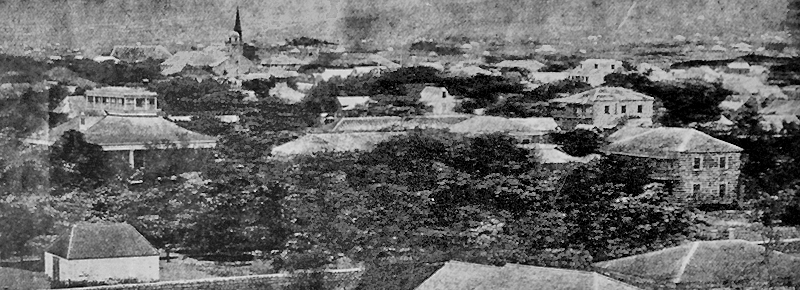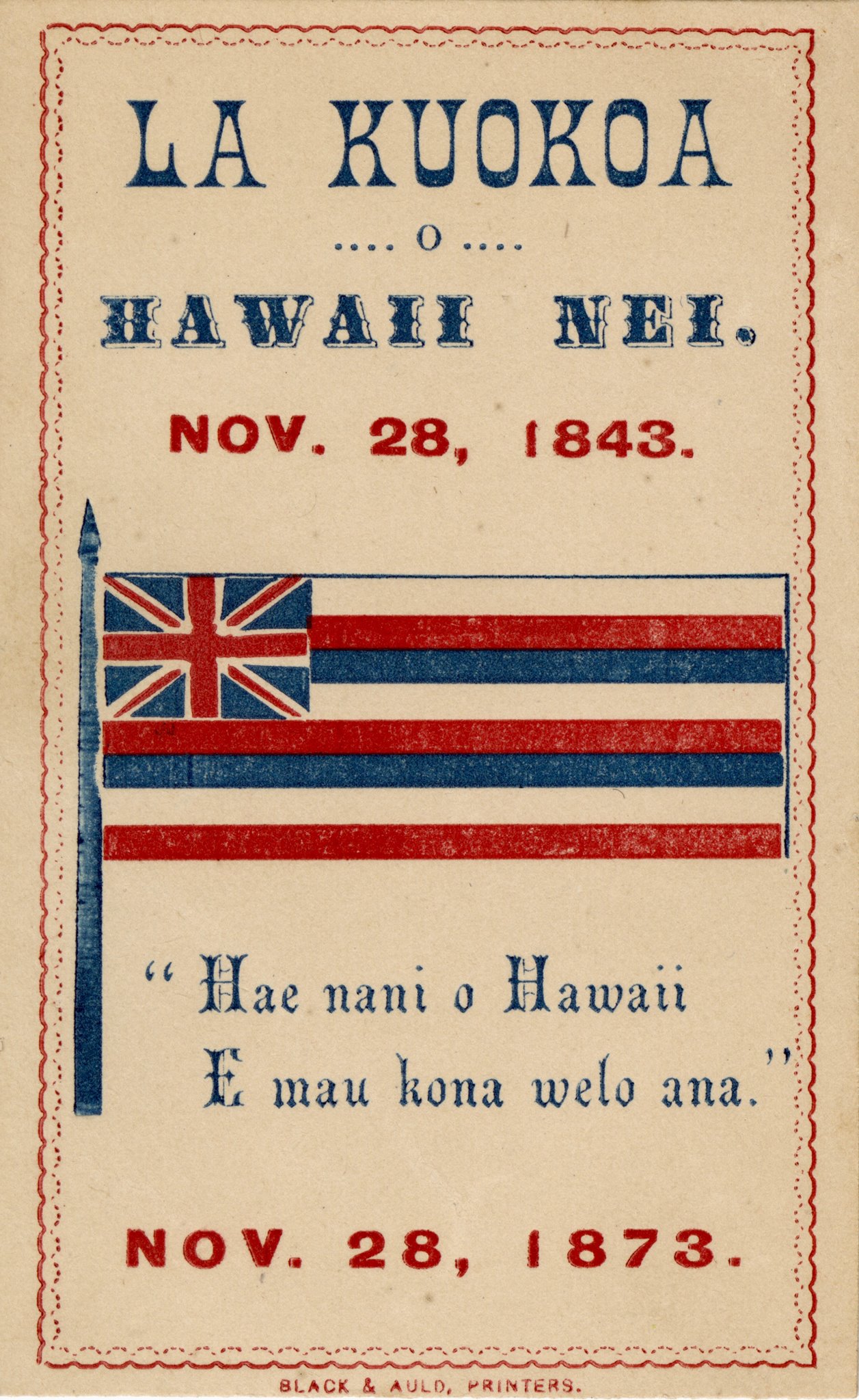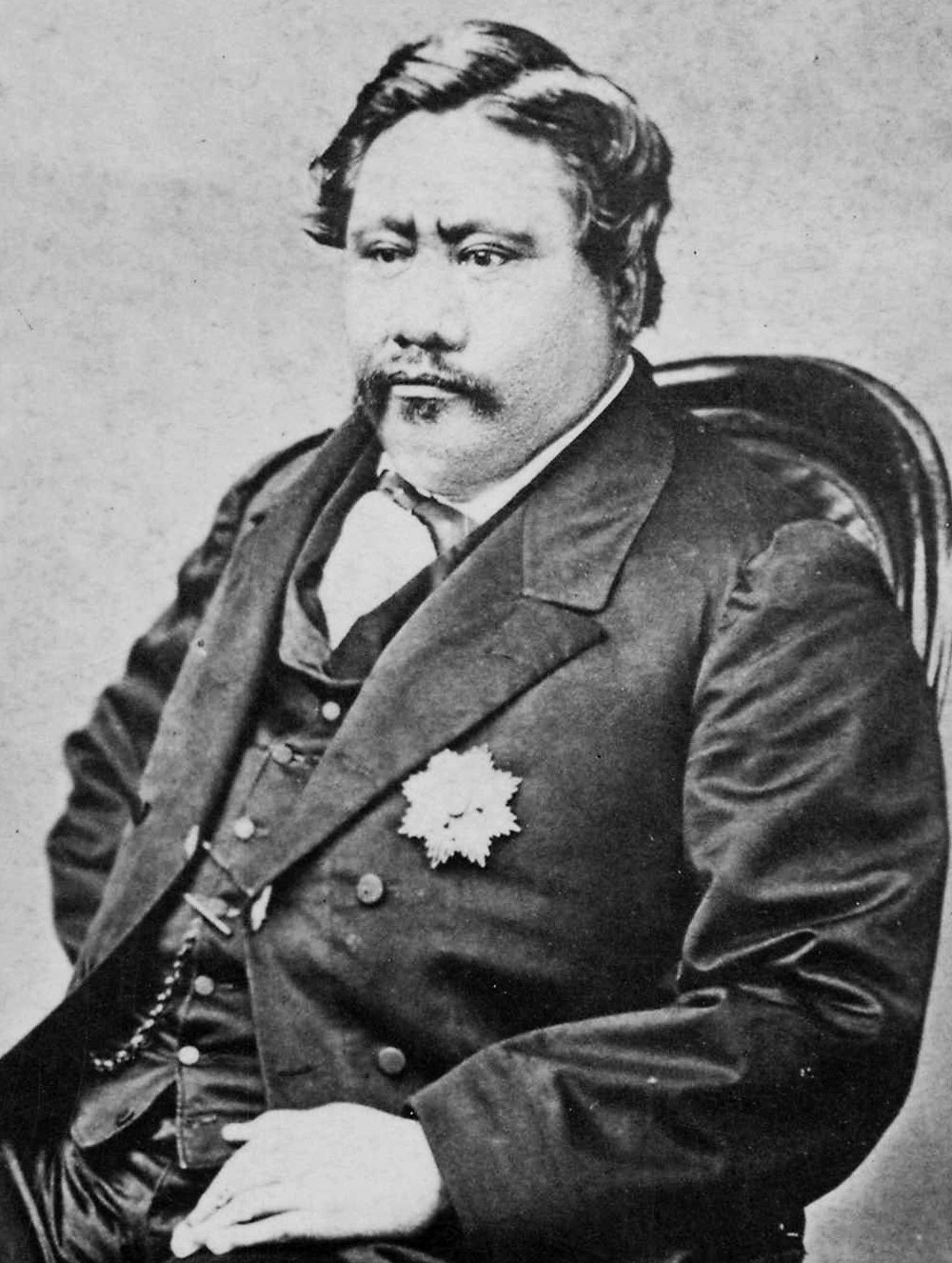|
Lunalilo
Lunalilo (William Charles Lunalilo; January 31, 1835 – February 3, 1874) was the sixth monarch of the Kingdom of Hawaii from his election on January 8, 1873, until his death a year later. Born to Kekāuluohi and High Chief Charles Kanaʻina, he was of royal descent and a grandnephew of King Kamehameha I. He was educated at the Royal School by American missionaries and was proclaimed eligible for the throne by King Kamehameha III. After the death of King Kamehameha V, he was elected to the throne in 1873 by a unanimous decision of the legislature of the kingdom. Due to his popularity and status as Hawaii's first elected monarch, he became known as "The People's King". He died a year later from tuberculosis. Early life William Charles Lunalilo was born on January 31, 1835, in a two-story house made of coral brick, an area known as '' Pohukaina'', now part the grounds of the ʻIolani Palace in Honolulu. His mother was High Chiefess Miriam Auhea Kekāuluohi (later styled ... [...More Info...] [...Related Items...] OR: [Wikipedia] [Google] [Baidu] |
Kalākaua
Kalākaua (David Laʻamea Kamanakapuʻu Māhinulani Nālaʻiaʻehuokalani Lumialani Kalākaua; November 16, 1836 – January 20, 1891), was the last king and penultimate monarch of the Kingdom of Hawaiʻi, reigning from February 12, 1874, until his death in 1891. Succeeding Lunalilo, he was elected to the vacant throne of Hawaiʻi against Queen Emma. Kalākaua was known as the Merrie Monarch for his convivial personality – he enjoyed entertaining guests with his singing and ukulele playing. At his coronation and his birthday jubilee, the hula, which had hitherto been banned in public in the kingdom, became a celebration of Hawaiian culture. During Kalākaua's reign, the Reciprocity Treaty of 1875 brought great prosperity to the kingdom. Its renewal continued the prosperity but allowed United States to have exclusive use of Pearl Harbor. In 1881, Kalākaua took a trip around the world to encourage the immigration of contract sugar plantation workers. He wanted Hawaiians ... [...More Info...] [...Related Items...] OR: [Wikipedia] [Google] [Baidu] |
Lunalilo Mausoleum
The Lunalilo Mausoleum (also called Lunalilo's Tomb) is the final resting place of Hawaii's sixth monarch King Lunalilo and his father Charles Kanaʻina on the ground of the Kawaiahaʻo Church, in Downtown Honolulu on the Hawaiian Island of Oʻahu. History Lunalilo died from tuberculosis on February 3, 1874, after a short reign of a year. On his deathbed, Lunalilo had requested a burial at Kawaiahaʻo Church on the church's ground instead of Royal Mausoleum at Mauna ʻAla in Nuʻuanu Valley, the burial site of most modern Hawaiian monarchs. Historians have speculated that the democratically elected king wanted to be buried in the cemetery to be closer to the common people. Another reasoning for his refusal to be buried alongside his predecessors was rooted in a feud between Lunalilo and the Kamehameha family over his mother Kekāuluohi's exclusion from the list of royalty to be buried there in the 1860s. Kekāuluohi's remains were buried at sea by Lunalilo. After his state ... [...More Info...] [...Related Items...] OR: [Wikipedia] [Google] [Baidu] |
Charles Kanaʻina
Charles Kanaʻina (Kanaʻina II; May 4, 1798 – March 13, 1877) was an aliʻi (hereditary noble) of the Hawaiian Kingdom, Kingdom of Hawaii, prince consort of Kuhina Nui, Kaʻahumanu III and father of Lunalilo, William Charles Lunalilo, the 6th monarch of the House of Kamehameha, Kamehameha Dynasty. Kanaʻina was a descendant of several figures from ancient History of Hawaii, Hawaiian history, including Līloa, Liloa, Hakau and Umi-a-Liloa of Hawaii Island as well as Piʻilani, Piilani of Maui. He served on both the Privy Counsel and in the House of Nobles. He was named after his uncle Kalaimanokahoʻowaha, Kanaʻina, a name that means "The conquering" in the Hawaiian language, Hawaiian Language. This uncle greeted James Cook, Captain James Cook in 1778 and confronted the navigator before he was killed. His wife Kekāuluohi, Miriam Auhea Kekāuluohi was a widow and niece of Kamehameha I. She was also married to Kamehameha II before he converted to Christianity and gave up all ... [...More Info...] [...Related Items...] OR: [Wikipedia] [Google] [Baidu] |
Hawaiian Kingdom
The Hawaiian Kingdom, also known as the Kingdom of Hawaiʻi ( Hawaiian: ɛ ɐwˈpuni həˈvɐjʔi, was an archipelagic country from 1795 to 1893, which eventually encompassed all of the inhabited Hawaiian Islands. It was established in 1795 when Kamehameha I, then Aliʻi nui of Hawaii, conquered the islands of Oʻahu, Maui, Molokaʻi, and Lānaʻi, and unified them under one government. In 1810, the Hawaiian Islands were fully unified when the islands of Kauaʻi and Niʻihau voluntarily joined the Hawaiian Kingdom. Two major dynastic families ruled the kingdom, the House of Kamehameha and the House of Kalākaua. The kingdom subsequently gained diplomatic recognition from European powers and the United States. An influx of European and American explorers, traders, and whalers soon began arriving to the kingdom, introducing diseases such as syphilis, tuberculosis, smallpox, and measles, leading to the rapid decline of the Native Hawaiian population. In 1887, King Kalā ... [...More Info...] [...Related Items...] OR: [Wikipedia] [Google] [Baidu] |
Kingdom Of Hawaii
The Hawaiian Kingdom, also known as the Kingdom of Hawaiʻi (Hawaiian language, Hawaiian: [kɛ ɐwˈpuni həˈvɐjʔi]), was an Archipelagic state, archipelagic country from 1795 to 1893, which eventually encompassed all of the inhabited Hawaiian Islands. It was established in 1795 when Kamehameha I, then Aliʻi nui of Hawaii, conquered the islands of Oʻahu, Maui, Molokaʻi, and Lānaʻi, and unified them under one government. In 1810, the Hawaiian Islands were fully unified when the islands of Kauaʻi and Niʻihau voluntarily joined the Hawaiian Kingdom. Two major Dynasty, dynastic families ruled the kingdom, the House of Kamehameha and the House of Kalākaua. The kingdom subsequently gained diplomatic recognition from European powers and the United States. An influx of European and American explorers, traders, and whalers soon began arriving to the kingdom, introducing diseases such as syphilis, tuberculosis, smallpox, and measles, leading to the rapid decline of the Native H ... [...More Info...] [...Related Items...] OR: [Wikipedia] [Google] [Baidu] |
Victoria Kamāmalu
Victoria Kamāmalu Kaʻahumanu IV (November 1, 1838 – May 29, 1866) was ''Kuhina Nui'' of Hawaii and its crown princess. Named Wikolia Kamehamalu Keawenui Kaʻahumanu-a-Kekūanaōʻa and also named Kalehelani Kiheahealani, she was mainly referred to as Victoria Kamāmalu or Kaʻahumanu IV, when addressing her as the ''Kuhina Nui''. In her role of Kuhina Nui, she acted as Regent between the death of the King in 1863 until the election of a new King the same year. Family Born at the Honolulu Fort, on November 1, 1838, she was the only daughter of Kīnaʻu, Elizabeth Kīnaʻu (Kaʻahumanu II) and her third husband Kekūanaōʻa, Mataio Kekūanaōʻa. Through her mother she was granddaughter of King Kamehameha I, founder of the united Hawaiian Kingdom. Her two brothers would later become kings of Hawaii as Kamehameha IV and Kamehameha V. She was named after her maternal aunt Kamāmalu, Queen Kamāmalu, the consort of Kamehameha II, who died in London from the measles. The Christ ... [...More Info...] [...Related Items...] OR: [Wikipedia] [Google] [Baidu] |
Kamehameha V
Kamehameha V (Lota Kapuāiwa Kalanimakua Aliʻiōlani Kalanikupuapaʻīkalaninui; December 11, 1830 – December 11, 1872), reigned as the fifth monarch of the Kingdom of Hawaiʻi from 1863 to 1872. His motto was "Onipaʻa": immovable, firm, steadfast, or determined; he is said to have worked diligently for his people and kingdom, being described as the last great traditional chief. Early life He was born and given the name Lot Kapuāiwa December 11, 1830. His mother was Elizabeth Kīnaʻu and father was Mataio Kekūanaōʻa. His siblings included David Kamehameha, Moses Kekūāiwa, Alexander Liholiho, and Victoria Kamāmalu. He also was a grandson of Kamehameha I. ''Kapu āiwa'' means mysterious kapu or sacred one protected by supernatural powers. He was adopted using the ancient Hawaiian tradition called ''hānai'' by Princess Nāhiʻenaʻena, but she died in 1836. He was then adopted by his grandmother Queen Kalākua Kaheiheimālie and step-grandfather High Chief ... [...More Info...] [...Related Items...] OR: [Wikipedia] [Google] [Baidu] |
List Of Monarchs Of Hawaii
Kamehameha I established the Hawaiian Kingdom in 1795 after conquering most of the Hawaiian Islands. In 1810, Kaumualiʻi became a vassal of Kamehameha I, who therefore emerged as the sole sovereign of the island chain of Hawaiʻi. His dynasty lasted until 1872, and his Kingdom lasted until 1893, when Queen Liliʻuokalani, of the Kalākaua dynasty, was deposed by pro-United States businessmen who led the overthrow of the Hawaiian Kingdom. The monarchy was officially ended on January 24, 1895, when Liliʻuokalani formally abdicated in response to an attempt to restore the royal government. On November 23, 1993, the Congress passed Public Law 103-150, also known as the ''Apology Resolution'', acknowledging the American role in the overthrow of the Hawaiian monarchy. President Bill Clinton signed the joint resolution the same day. Hawaiian Monarchs (1795–1893) , width=auto, Kamehameha ISpring, 1795 – May 8, 1819 , , c. 1758 Moʻokini Heiau, Kohala, Hawaiʻ ... [...More Info...] [...Related Items...] OR: [Wikipedia] [Google] [Baidu] |
Kekāuluohi
Miriam Auhea Kalani Kui Kawakiu o Kekāuluohi Kealiʻiuhiwaihanau o Kalani Makahonua Ahilapalapa Kai Wikapu o Kaleilei a Kalakua also known as Kaahumanu III (July 27, 1794 – June 7, 1845), was Kuhina Nui of the Hawaiian Kingdom, Kingdom of Hawaii, a queen consort of both Kamehameha I and Kamehameha II, and mother of Lunalilo. In ''Hawaiian language, ʻŌlelo Hawaiʻi'' (Native Hawaiian language), ''Kekāuluohi'' means; "the vigorously growing vine". She adopted her secondary name ''Auhea'', meaning ''Where, oh where,'' in memory of the death of Kamehameha I. Birth and ancestry Kekāuluohi was born in 1794, the only daughter of her father High Chief Kalaimamahu (half-brother of Kamehameha I) with her mother Kalākua Kaheiheimālie of Maui, who was also a wife of Kamehameha I. She was ''hānai'' to (adopted by) her grandparents Namahana and Keeaumoku Pāpaiahiahi, Keeaumoku, who "fondled her as if she were a feather lei from the precious mamo bird." Through her mother she was a ... [...More Info...] [...Related Items...] OR: [Wikipedia] [Google] [Baidu] |
Royal School (Hawaii)
The Royal School is a historic school founded in 1839 in Honolulu, Hawaii, as the Chiefs' Children's School. The school was renamed as the Royal School in 1846. After the boarding closed in 1850, it became a day school for children. It later became a public elementary school, and moved to its present campus in 1967. The present Royal Elementary School continues to educate children from kindergarten to Grade 5 and has been named a Blue Ribbon School several times. History The Chiefs' Children's School was founded by King Kamehameha III of the Kingdom of Hawaii as a boarding school to educate the children of the Hawaiian royalty ('' aliʻi''). The school was first located where the ʻIolani Barracks stand now. The need for the school was agreed upon during the general meeting of the mission in June 1839. The buildings were ready by 1840, and two more students were added in 1842. An 1844 article in the ''Polynesian'' listed all children with the exception of John William P ... [...More Info...] [...Related Items...] OR: [Wikipedia] [Google] [Baidu] |
Elective Monarchy
An elective monarchy is a monarchy ruled by a monarch who is elected, in contrast to a hereditary monarchy in which the office is automatically passed down as a family inheritance. The manner of election, the nature of candidate qualifications, and the electors vary from case to case. Historically, it was common for elective monarchies to transform into hereditary ones (whether legally or ''de facto'') by repeated election of the previous rulers' children, or for hereditary monarchies to acquire elective or semi-elective succession laws, particularly following dynastic crises. Evolution Many kingdoms were officially elective historically, though the candidates were typically only from the family of the deceased monarch. Eventually, however, most elected monarchies introduced hereditary succession, guaranteeing that the title and office stayed within the royal family and specifying, more or less precisely, the order of succession. Today, almost all monarchies are hereditary mon ... [...More Info...] [...Related Items...] OR: [Wikipedia] [Google] [Baidu] |
Kawaiahaʻo Church
Kawaiahaʻo Church is a historic Congregational church located in Downtown Honolulu on the Hawaiian Island of Oʻahu. The church, along with the Mission Houses, comprise the Hawaiian Mission Houses Historic Site, which was designated a U.S. National Historic Landmark (NHL) in 1962. and In 1966 it and all other NHLs were included in the first issuance of the National Register of Historic Places. At one time the central church of the Kingdom of Hawaiʻi and chapel of the Hawaiʻian royal family, the church is popularly known as “Hawaiʻi's Westminster Abbey”. The name comes from the Hawaiian noun phrase ''ka wai a Haʻo'' (“the water of Haʻo”), because its location had a spring and freshwater pool of a High Chiefess nameHaʻo It has also been called ''hale pule lahui'' (“Great Stone Church”), the Hawaiian Tabernacle ('' luakini''), the Mother Church, the Kingʻs Church, the Kingʻs Chapel, and the "''Aliʻi'' Church". Today, Kawaiahaʻo continues to use the H ... [...More Info...] [...Related Items...] OR: [Wikipedia] [Google] [Baidu] |




